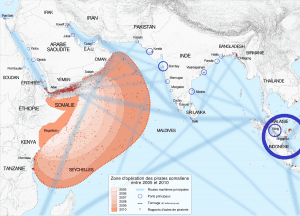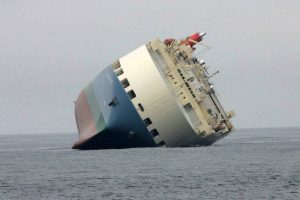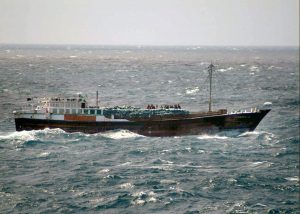
Contemporary Piracy as an Issue of Academic Inquiry: A Bibliography
Jan Stockbruegger, Brown University, & Christian Bueger, Cardiff University We have compiled a new version of the Piracy Studies Bibliography, which you can access as PDF here. The aim of this bibliography is to gather a comprehensive collection of academic works on contemporary (post WWII) maritime piracy, with a focus ...

The Effective Maritime Security Management Model and its Impact on the Organizational Performance of Shipping Companies
Elena Sadovaya and Vinh Thai, Nanyang Technological University, Singapore To enhance maritime security in shipping companies, a number of compulsory and voluntary regulations have been introduced at the beginning of the 21st century. However, besides benefits expected from the implementation of these regulations, they have also had negative impacts. Nevertheless, ...

Preventing Piracy off Somalia: Insights from Routine Activity Theory
Michael Townsley, Griffith University In the first decade of the 21st century, the Horn of Africa became the global piracy hot spot, with headlines detailing multi-million dollar ransoms, rescue operations and violence. The international response to Somali-based piracy was organised into three domains: (i) maintaining order in international waters, (ii) ...

Economic Factors for Piracy: The Effect of Commodity Price Shocks
Alexander Knorr, University of Colorado Modern maritime piracy has become a significant issue which costs the global economy $24.5 billion per year. The International Maritime Organization (IMO) reports that attacks in major waterways have increased over the past decades. Extensive research has been done with regard to countering piracy and ...

The Future of Maritime Security in East Asia: Alternative Scenarios and the Importance of Trust
Sam Bateman, University of Wollongong In a recent article in Contemporary Southeast Asia, Sam Bateman makes predictions about how the maritime environment of East Asia might evolve over the next decade. The article identifies three possible scenarios for the future, as well as the risks of a “strategic shock” that ...

Liberal Cooperation vs. Great Power Rivalry? How the New U.S. Seapower Strategy Shapes World Order
In March 2015, the U.S. published its updated and revised “Cooperative Strategy for 21st Century Seapower: Forward, Engaged, Ready (CS-21R). CS-21R was developed jointly by the Navy, the Marine Corps and the Coast Guard. It is one of the first official documents that tries to translate the strategic “rebalance toward ...

Managing Security Risks at Sea: A Challenge for the Shipping Industry
Hans Liwång, (Swedish Defence University), Karl Sörenson (Swedish Defence University) and Cecilia Österman (Linnaeus University) Ship security measures are often the first and only measures preventing criminal acts at sea. At the same time ship operators have had problems defending the quality of their ship security analysis when it is ...

Norm Subsidiarity in Maritime Security: Why East Asian States Cooperate in Counter-Piracy
Terrence Lee and Kevin McGahan, National University of Singapore Malaysia, Singapore and Indonesia are the three key littoral countries that border the Straits of Malacca, a major waterway and transit area in Southeast Asia which has traditionally witnessed a fair amount of maritime piracy through the ages. While these countries ...

The Fourth Annual International Maritime Security Conference ‘Governance’ 23/24 March 2015
Global Directions, Merton College Oxford in Conjunction with the Hudson Trust and the First Sea Lord’s Fellowship Anja Shortland, Julia Amos and Sarah Percy This year’s conference was on the theme of “governance” and explored both state and non-state responses to insecurity, risks and opportunities in the maritime domain. It ...

China’s Strategic Dilemma in the Indian Ocean
David Brewster, Strategic and Defence Studies Centre, Australian National University China is facing a growing strategic dilemma in the Indian Ocean. The balance of power in the Indian Ocean is changing, driven by the erosion of the longstanding US strategic predominance and the rise of China and India as major ...
